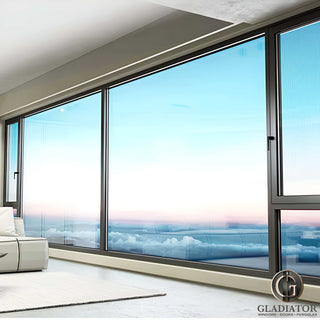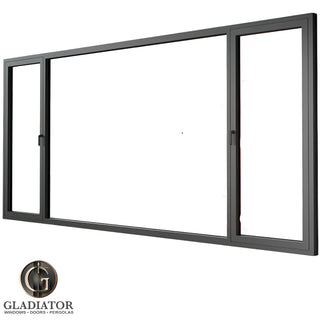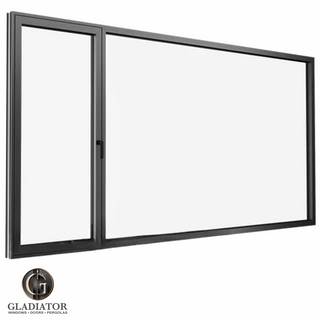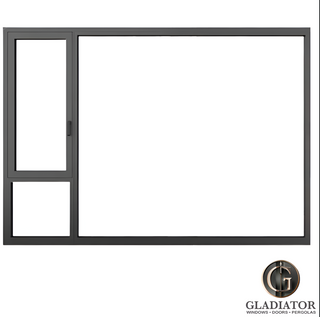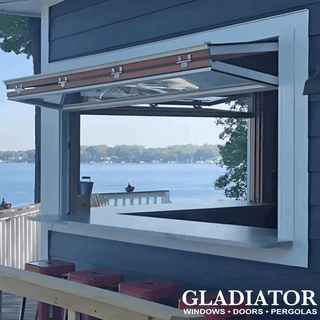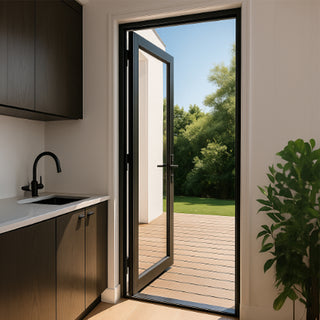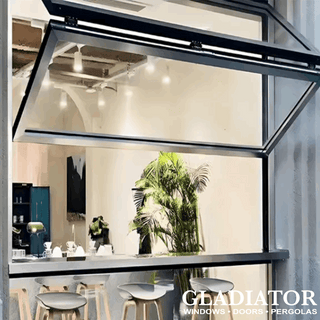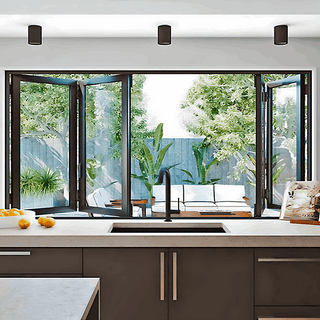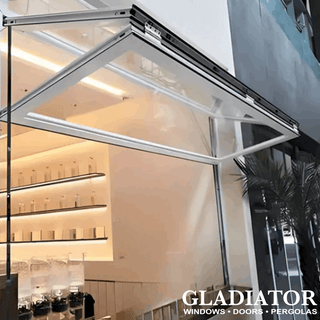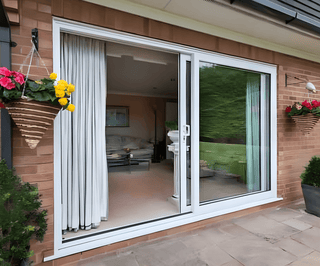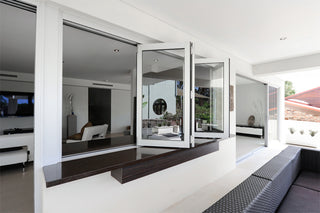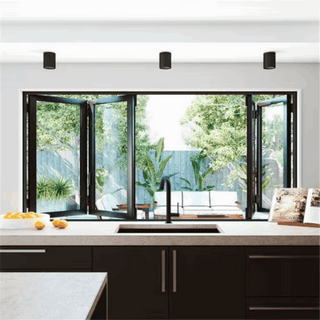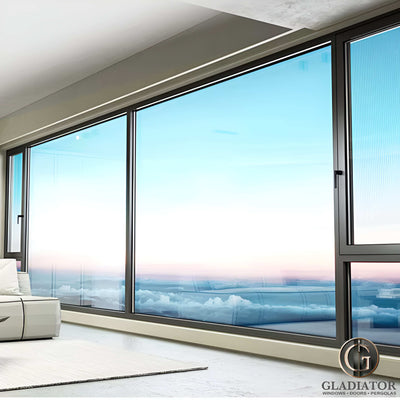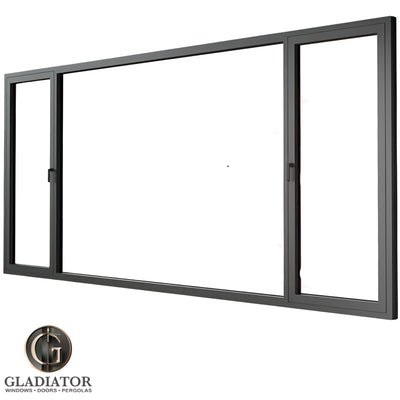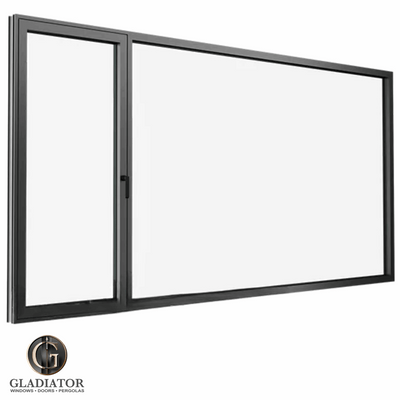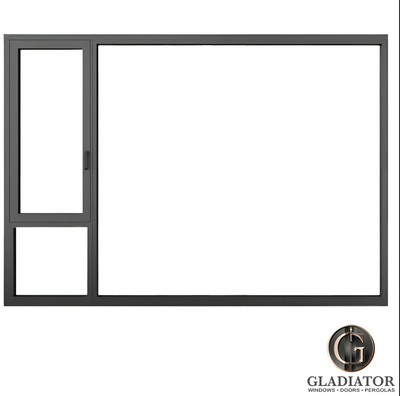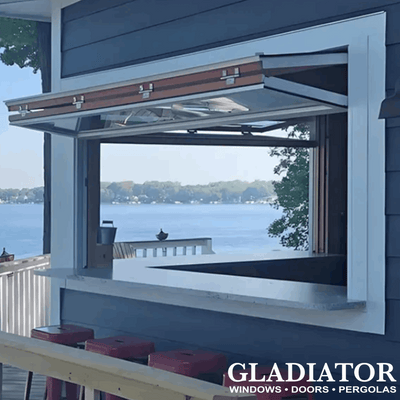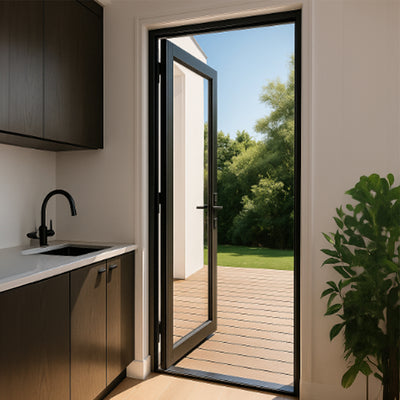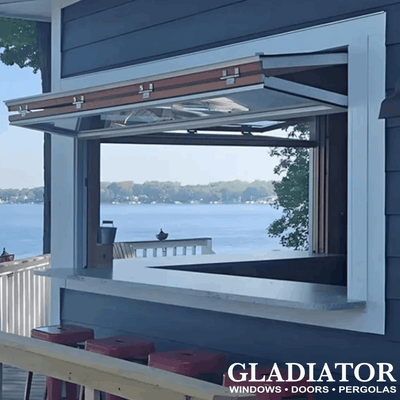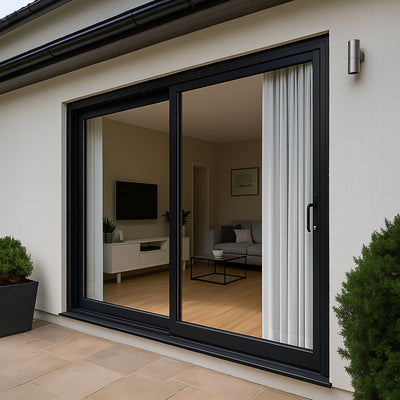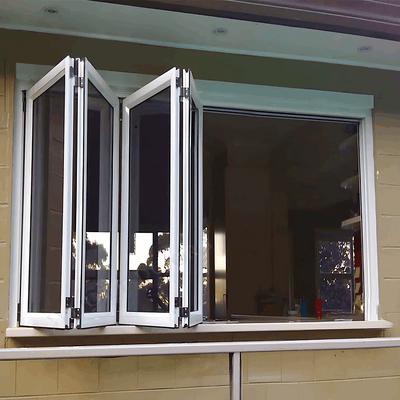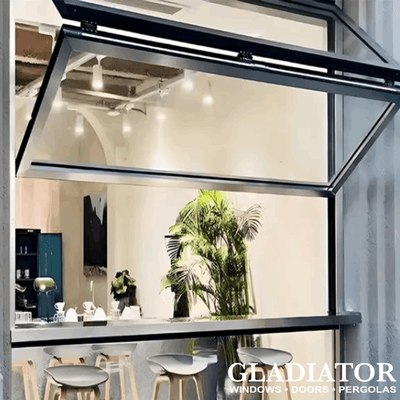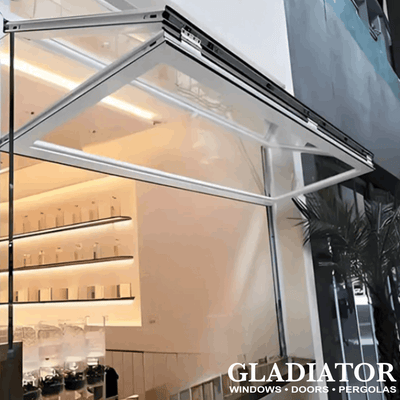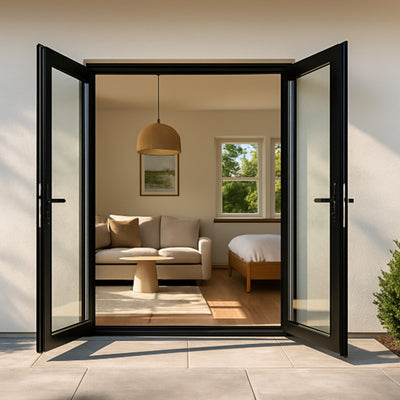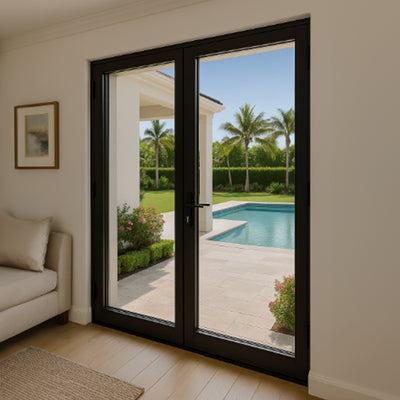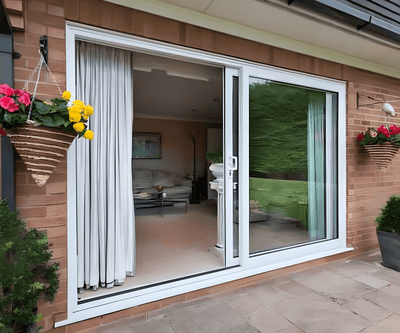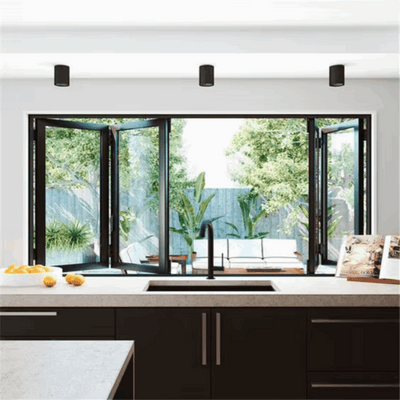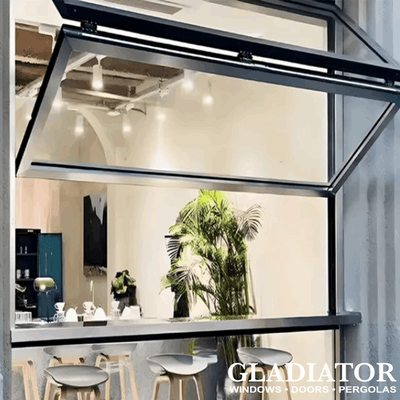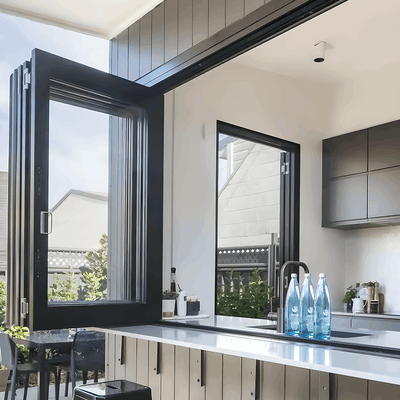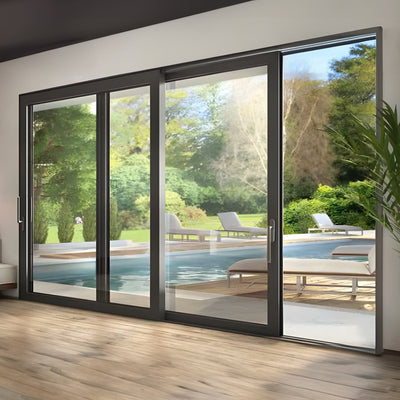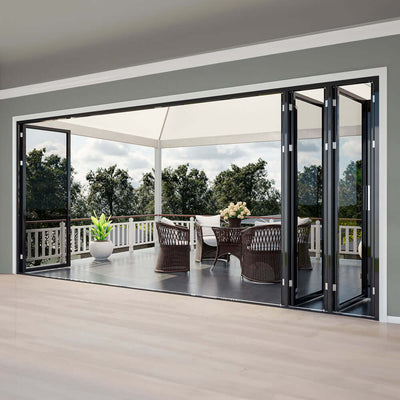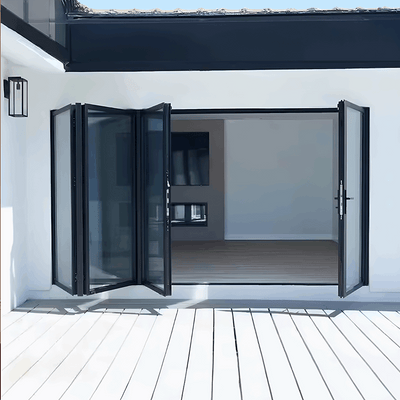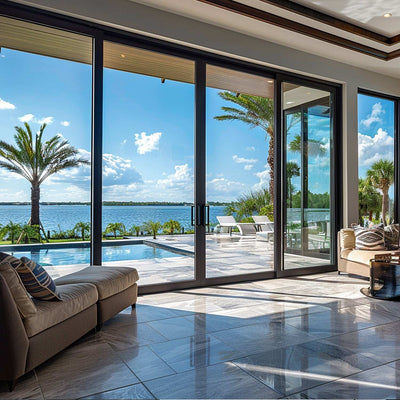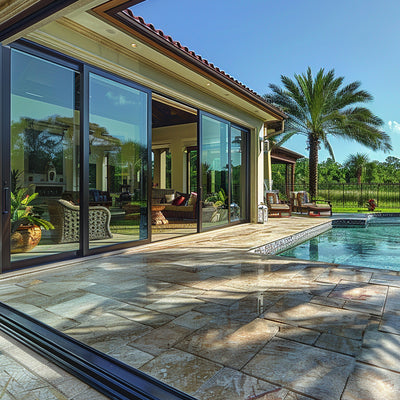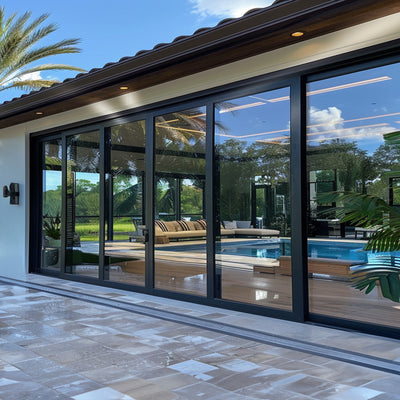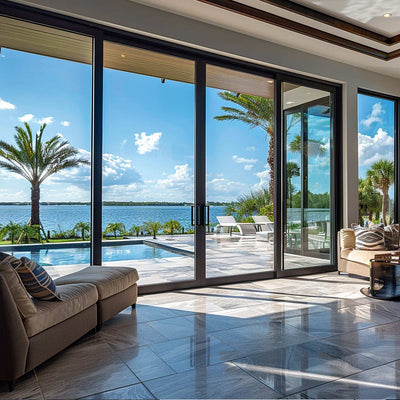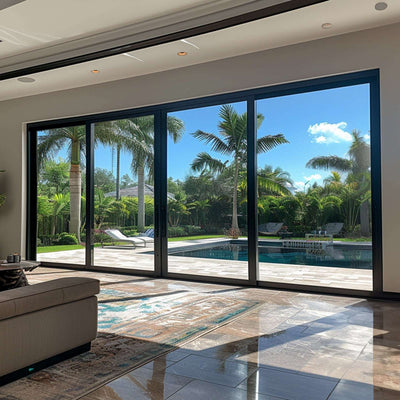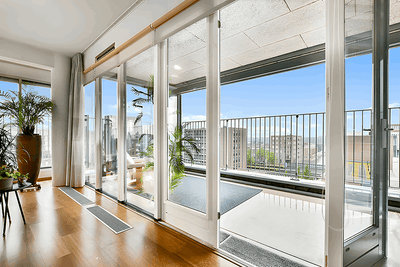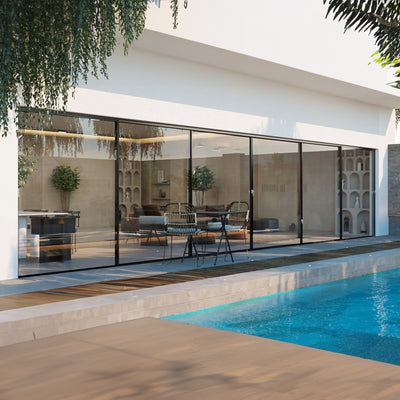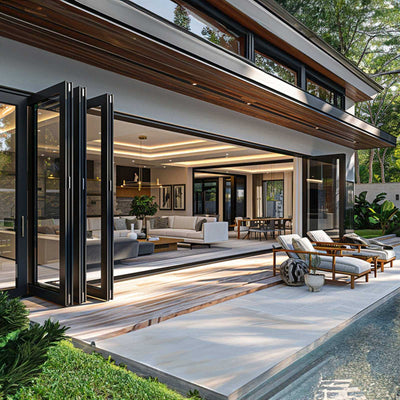Why Homeowners Are Embracing Sliding Door Replacement
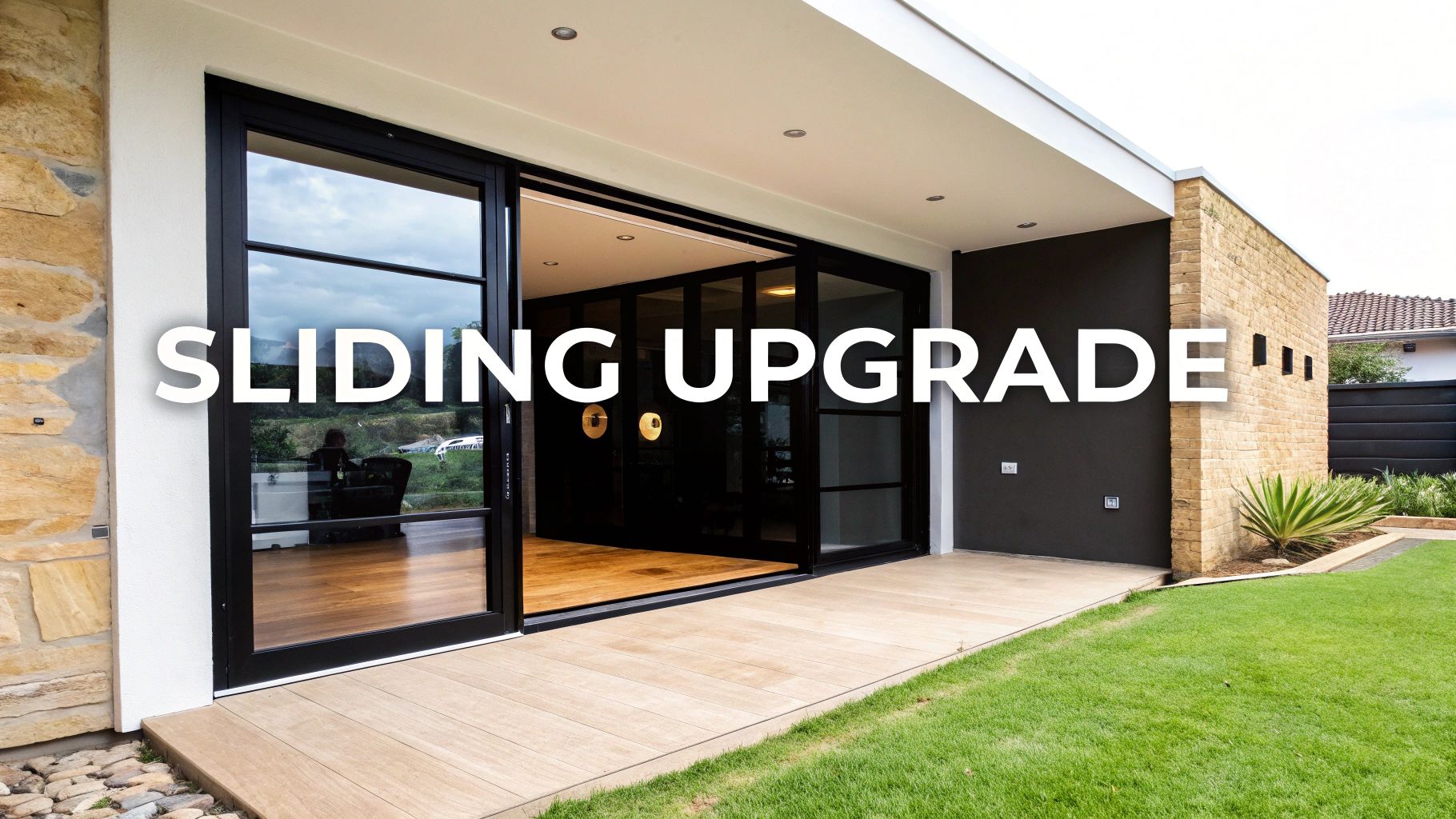
Sliding door replacement is becoming increasingly popular, and it's easy to see why. It's more than a simple renovation; it's an investment in both the beauty and functionality of a home. Let's delve into the reasons behind this growing trend.
Enhanced Aesthetics and Seamless Transitions
Many homeowners crave a seamless flow between their indoor and outdoor living areas. Modern sliding doors, with their expansive glass panels, create this connection beautifully. They blur the lines between inside and out, inviting natural light to flood the home and offering stunning views. Replacing older doors with contemporary designs also significantly boosts a home's curb appeal. Sleek frames and updated hardware can truly transform a home's exterior.
Improved Energy Efficiency and Cost Savings
Another compelling reason for upgrading is the potential for substantial energy savings. Older sliding doors are often drafty and poorly insulated. This inefficiency can lead to higher energy bills as homeowners try to maintain comfortable temperatures. Newer models incorporate advanced insulation technologies and high-performance glass. These features minimize energy loss and improve thermal performance, resulting in lower utility costs and a smaller carbon footprint. This makes replacing sliding doors a smart financial decision in the long run.
Market Trends and Growth
The rising demand for sliding doors, especially patio doors, underscores their popularity. In 2023, sliding patio doors commanded a 43.3% market share in the U.S. This popularity stems from their enduring appeal and practicality. The renovation market for patio doors reached USD 1.22 billion in 2023, highlighting the significance of replacements in the industry's growth. Projections indicate the U.S. windows and patio doors market will reach USD 10.30 billion by 2030. Learn more about market trends for sliding doors here. You might also be interested in Gladiator Window and Doors' sitemap.
Enhanced Functionality and Security
Finally, improved functionality and security are major factors driving sliding door replacements. Modern designs often feature smoother operation, better locking mechanisms, and more durable construction. These enhancements not only make the doors easier to use but also provide increased security against intruders and the elements. This added peace of mind is a valuable benefit for homeowners.
Selecting the Perfect Sliding Door for Your Home
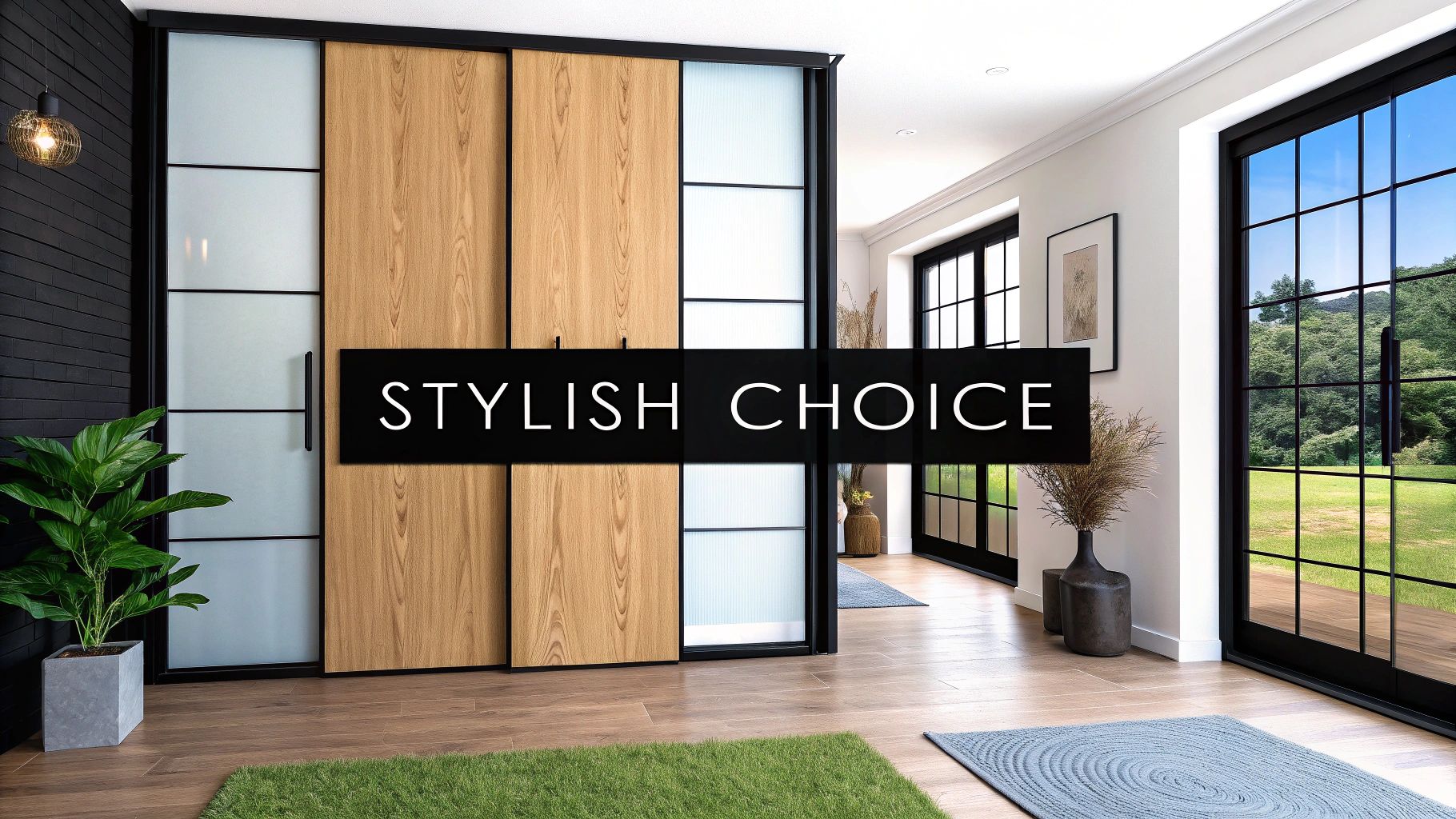
Choosing the right sliding door can be a big decision. With so many options on the market, finding the perfect fit for your home can seem daunting. This guide will walk you through important factors to consider for your sliding door replacement project.
Key Considerations For Sliding Door Materials
The material you choose significantly impacts your door's durability, energy efficiency, and how much upkeep it requires. Let's explore some popular options.
-
Vinyl: A cost-effective choice, vinyl is known for being low-maintenance and energy-efficient. Vinyl doors resist rot and insects, making them suitable for various climates. However, color options may be limited.
-
Wood: A classic material prized for its natural beauty and insulation. Wood doors provide excellent energy efficiency, but they need regular maintenance to prevent damage from rot or warping. They also typically cost more than vinyl.
-
Aluminum: A strong and durable option resistant to rust and corrosion. Aluminum doors offer a sleek, modern appearance and require minimal maintenance. They can, however, conduct heat more readily than wood or vinyl, which could affect energy efficiency.
-
Fiberglass: This premium material combines the strength of aluminum with the insulating qualities of wood. Fiberglass doors are highly energy-efficient, low-maintenance, and can withstand harsh weather. They do come with a higher price tag.
Exploring Different Sliding Door Styles
Your sliding door's style should complement your home's architectural design and fit your lifestyle. Each style offers its own unique advantages:
-
Traditional Sliding Doors: These classic two-panel doors are a reliable and budget-friendly choice. One panel slides past the other, providing easy access to the outdoors.
-
Multi-Panel Sliding Doors: For wider openings, these doors use multiple panels sliding along a single track. They create a seamless flow between indoor and outdoor spaces, maximizing natural light and ventilation. You might be interested in: Our Products.
-
Stacking Sliding Doors: Also called stack doors, these increasingly popular doors offer the widest possible opening. The panels stack neatly together, creating an unobstructed view and pathway between indoors and out. In fact, 60% of industry professionals consider stack doors the most popular choice for blending indoor/outdoor living. Find more detailed statistics here.
-
Pocket Sliding Doors: A perfect fit for smaller spaces. These doors slide into a wall cavity, disappearing completely when open. This maximizes floor space and offers a sleek and modern look.
To help visualize the different options available, let's look at a comparison table:
Sliding Door Types Comparison: A comprehensive comparison of different sliding door types for replacement projects, highlighting key features, benefits, and typical costs.
| Door Type | Best For | Typical Cost Range | Energy Efficiency | Installation Complexity |
|---|---|---|---|---|
| Vinyl Sliding Doors | Budget-conscious projects, low-maintenance needs | $1,000 - $3,000 | Good | Easy |
| Wood Sliding Doors | Traditional aesthetics, excellent insulation | $2,000 - $5,000 | Excellent | Moderate |
| Aluminum Sliding Doors | Modern designs, durability | $1,500 - $4,000 | Fair | Moderate |
| Fiberglass Sliding Doors | High-end projects, maximum energy efficiency | $3,000 - $7,000 | Excellent | Moderate to Complex |
| Multi-Panel Sliding Doors | Maximizing natural light and ventilation | $2,500 - $8,000 | Good to Excellent | Moderate to Complex |
| Stacking Sliding Doors | Creating expansive openings, indoor/outdoor living | $4,000 - $10,000+ | Good to Excellent | Complex |
| Pocket Sliding Doors | Small spaces, maximizing floor area | $1,500 - $4,000 | Varies based on material | Complex |
This table provides a general overview. Actual costs and installation complexity can vary based on specific project requirements.
Glass Packages and Energy Efficiency
The glass package you select plays a crucial role in your sliding door’s energy efficiency and overall comfort.
-
Low-E Coatings: These thin coatings reflect heat, minimizing energy loss during both summer and winter.
-
Argon or Krypton Gas Fills: Inert gases sealed between glass panes add extra insulation, further improving energy efficiency.
-
Double or Triple Glazing: Multiple layers of glass create insulating air spaces, which reduce heat transfer and improve soundproofing.
Choosing the right sliding door involves balancing aesthetics, functionality, and energy efficiency. By considering these factors, you can select a door that enhances your home's beauty and improves its performance. 96% of experts emphasize the importance of aesthetics and durability for homeowners, while 84% of professionals highlight energy efficiency as a major concern. Learn more about this topic here.
Real Costs of Sliding Door Replacement Revealed
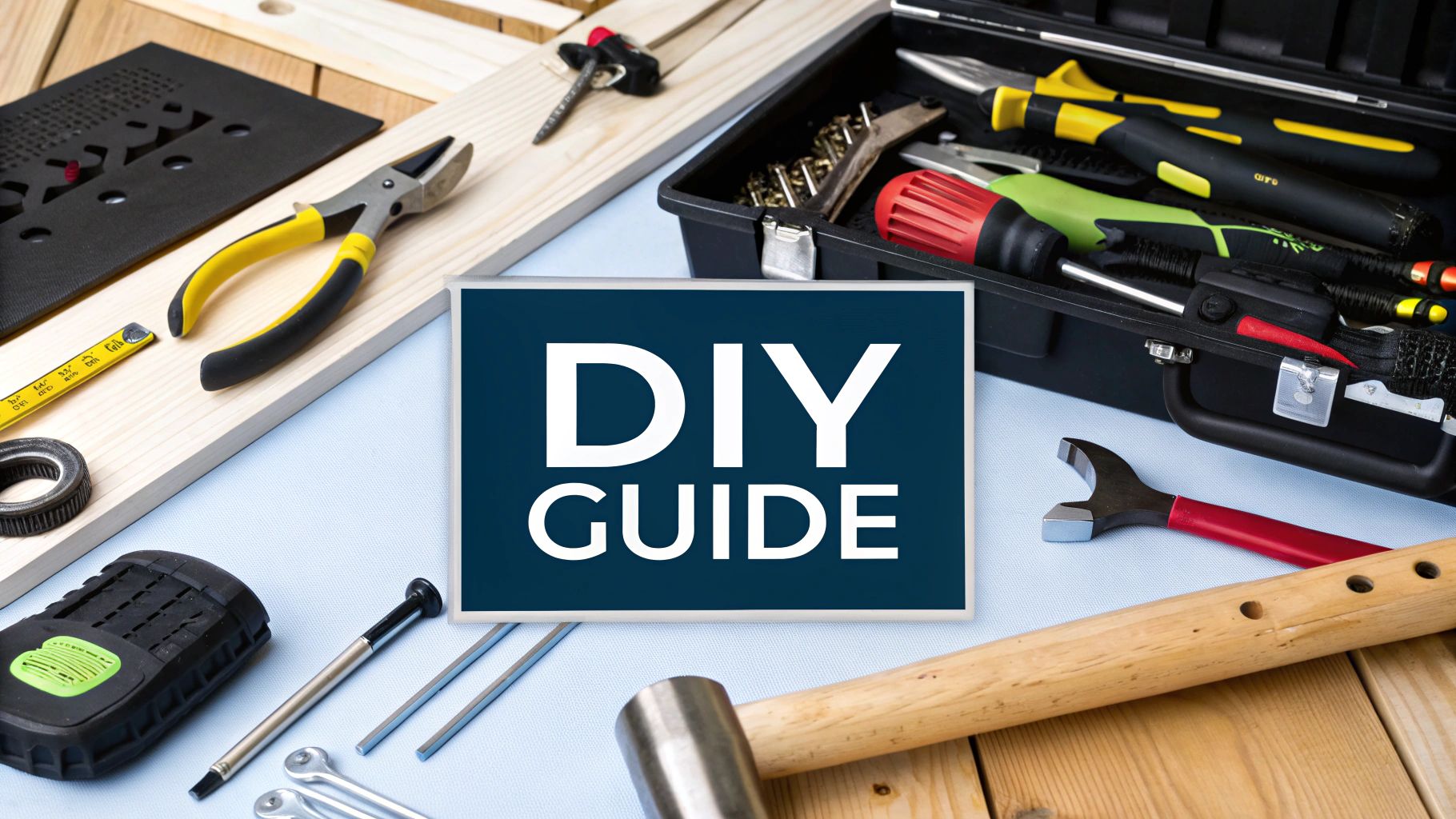
Planning to enhance your home with new sliding doors? A clear understanding of the total cost is essential for a smooth project. This involves looking beyond the sticker price of the door itself. Let's break down the various expenses involved in replacing your sliding glass doors.
Basic Sliding Door Costs
The most apparent expense is the door itself. Standard vinyl sliding doors typically fall between $1,000 and $3,000. For premium fiberglass or custom wood doors, the price can climb to $7,000 or more. This price range reflects differences in material, size, and features. Naturally, a larger door with multiple panels and advanced glass options will be more expensive.
Installation Costs: A Significant Factor
Installation makes up a substantial portion of your overall budget. This cost depends on the complexity of the installation and the contractor's rates. Standard installations usually cost between $500 and $1,500. However, more complex installations, such as those requiring structural changes or custom framing, can significantly increase this number. Geographic location also plays a role, influencing labor rates.
Unforeseen Expenses to Consider
Beyond the obvious costs, some hidden expenses can impact your budget. These may include removing the old door, disposing of construction debris, and repairing any existing structural damage. For example, a rotted frame will need replacement before installing the new door, adding to the project's cost. A thorough inspection before starting the project is crucial to identifying these potential issues.
Cost Breakdown by Door Type and Features
The type of door you choose significantly affects the overall cost. Basic vinyl sliding doors are generally the most budget-friendly option. Premium materials like fiberglass and wood come with a higher price tag. Additional features such as energy-efficient glass, enhanced security features, and custom hardware can also contribute to the final cost. Understanding these variables helps you prioritize the features that best meet your needs and budget.
You might also be interested in: Our blog sitemap for more information on related topics.
Balancing Initial Costs with Long-Term Value
When budgeting, remember to consider the long-term value. A higher upfront cost for an energy-efficient door can lead to substantial savings on your energy bills over time. Similarly, investing in a durable, high-quality door minimizes future maintenance and repairs. In fact, in the broader context of door replacement, finding the right product is a key priority for homeowners. Between 2018 and 2022, the market for doors and molding grew by 10.7%. Find more detailed statistics here.
Cost Factors: A Detailed Look
The following table provides a detailed breakdown of the various cost factors associated with sliding door replacement projects.
| Cost Factor | Budget Option | Mid-Range Option | Premium Option | Impact on Total Cost |
|---|---|---|---|---|
| Door Material | Vinyl | Aluminum-Clad Wood | Fiberglass or Solid Wood | Significant |
| Door Size | Standard | Large | Extra-Large/Custom | Significant |
| Glass Type | Double-Pane | Low-E Double-Pane | Triple-Pane with Argon Gas | Moderate |
| Hardware | Standard | Upgraded Handles/Locks | Custom Hardware | Minor to Moderate |
| Installation | Basic | Standard | Complex (structural modifications) | Significant |
| Removal & Disposal | DIY | Included in Installation | Separate Contractor | Minor |
This table provides a general overview. Keep in mind that actual costs can vary depending on your project's specific requirements and your location. Careful planning and thorough research are essential for informed decision-making and staying within budget.
DIY vs. Pro Installation: What Experienced Homeowners Say
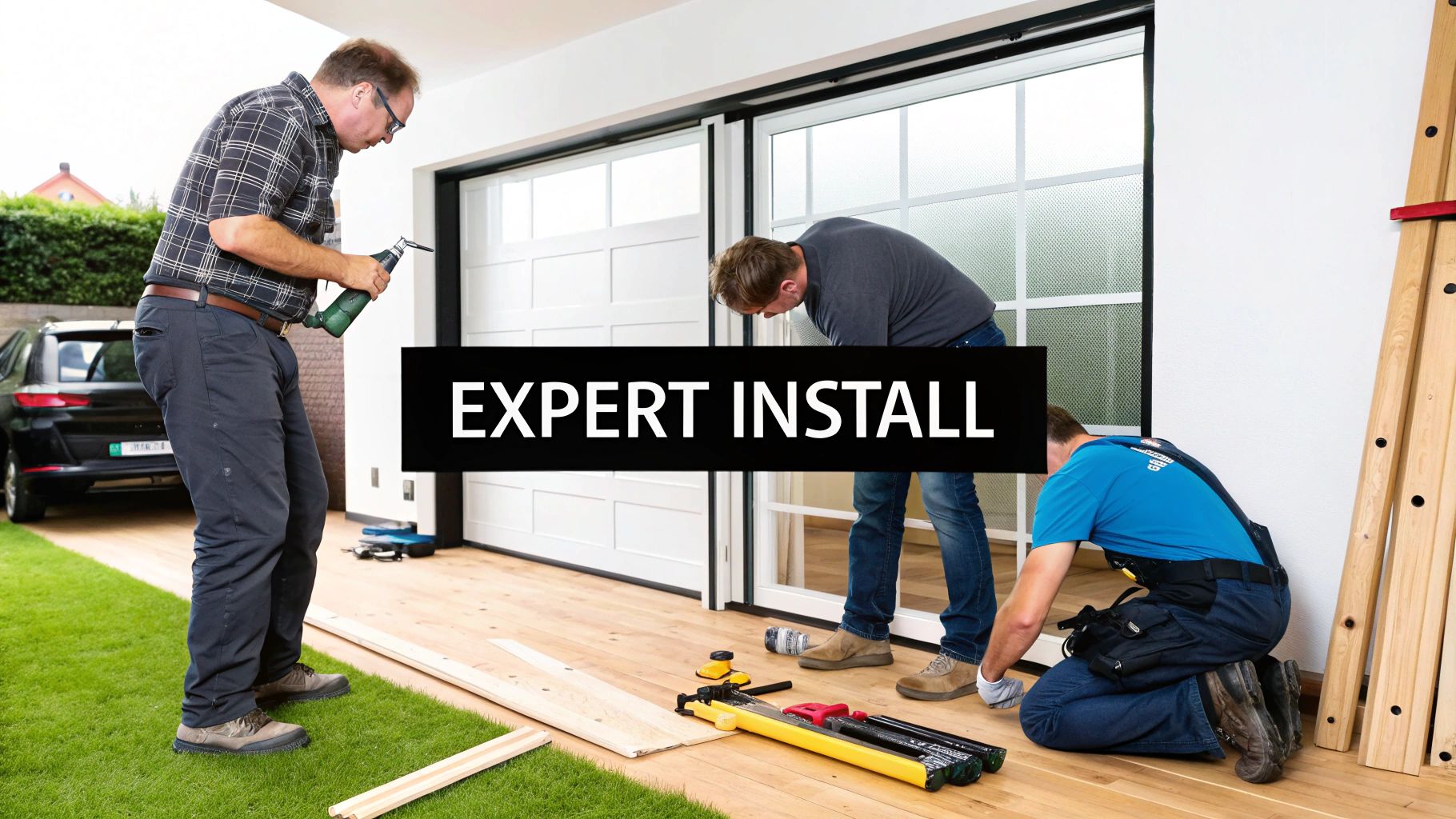
So, you’re ready to replace your sliding door. But a big question looms: DIY or hire a pro? This decision affects your budget and your project’s success. Let's examine the realities of both, based on what homeowners have learned.
The DIY Route: Potential Savings and Hidden Pitfalls
DIY offers potential cost savings. By skipping labor fees, you can invest in better door materials. But there are challenges. Even experienced DIYers hit snags.
Improperly installed rollers, for example, can cause sticking or derailment, leading to expensive repairs. Getting a perfect fit and proper weathersealing also takes precision and the right tools. Even small measurement errors can affect energy efficiency and security. DIY demands careful planning, precise measurements, and a realistic assessment of your skills.
Professional Installation: Expertise and Peace of Mind
Professional installation means leveraging a contractor's expertise. Professionals have the specialized tools and experience to handle complex installations, including structural modifications. They understand track alignment, weathersealing, and finishing for smooth, lasting operation.
This expertise minimizes costly errors and ensures optimal performance from the start. While professional installation adds to upfront costs, it provides peace of mind and prevents future headaches.
Making the Right Choice for Your Home
Choosing between DIY and professional installation hinges on several factors. Consider your skill level, the project's complexity, and your available time. If you've tackled similar projects and the installation seems simple, DIY might work.
However, for complex jobs or if you're uncertain, professional installation is generally best. Also, consider the value of your time. DIY can take much longer, affecting other commitments. Read also: How to find a contractor on our website.
Key Questions for Evaluating Contractors
If you choose professional installation, research is crucial. Ask potential contractors these questions:
- Experience: How long have you been installing sliding doors?
- Licensing and Insurance: Are you licensed and insured?
- References: Can you provide references from recent projects?
- Warranty: What warranties do you offer?
- Project Timeline: What's your estimated completion timeline?
By vetting contractors, you can select a qualified professional for a high-quality installation, ensuring years of trouble-free performance. This minimizes problems and maximizes your investment, creating a beautiful and functional home upgrade. A well-installed sliding door enhances both aesthetics and energy efficiency, offering lasting value.
Mastering Your Sliding Door Replacement Project
Replacing a sliding door might feel like a big job, but with the right planning and execution, it's completely manageable. This guide breaks down the process into key steps, offering helpful advice for a smooth and successful sliding door replacement.
Preparation Is Key: Setting the Stage for Success
Before you even consider removing the old door, proper preparation is essential. This involves gathering the necessary tools and safeguarding your work area. Think of it like preparing for a painting project – you wouldn't want to start without the right brushes or drop cloths.
-
Gather Your Tools: Having all the necessary tools readily available makes the process much more efficient. You'll likely need a measuring tape, screwdriver, level, pry bar, safety glasses, and possibly a reciprocating saw depending on your current door frame.
-
Protect Your Surroundings: Cover the floor with drop cloths and use painter's tape to shield nearby walls from scratches. This simple step prevents accidental damage and simplifies cleanup.
-
Remove the Old Door Carefully: Follow the manufacturer's instructions for removing the existing door. If you're unsure, consult a professional to avoid any damage to the frame or surrounding structure.
Precise Measurements: Ensuring a Perfect Fit
Accurate measurements are absolutely crucial for a successful sliding door replacement. This is like getting a new window – a precise fit is vital for both appearance and functionality.
-
Measure Multiple Times: Measure the width and height of the opening at several different points. Doors and frames can shift slightly over time, so taking multiple measurements ensures accuracy.
-
Account for the Frame: Be sure to include the frame dimensions in your measurements, as this will influence the size of the replacement door you need to purchase.
-
Double-Check Your Order: Before finalizing your purchase, confirm that the door dimensions perfectly match your measurements. This prevents costly errors and potential delays.
Installation: A Step-by-Step Guide
The installation process itself requires careful attention to detail and a methodical approach.
-
Prepare the Opening: Ensure the opening is clean, level, and unobstructed. This provides a smooth surface for the new door to operate on.
-
Install the Frame: Install the new door frame securely, making sure it's plumb and level. A level frame is key for smooth door operation and prevents sticking.
-
Hang the Door: Carefully hang the new sliding door, paying close attention to the rollers and track alignment. Proper alignment ensures smooth and effortless movement.
-
Test and Adjust: Test the door's movement, making sure it slides smoothly and locks securely. Adjust the rollers or track if needed to optimize performance.
Troubleshooting Common Challenges
Even with careful preparation, some challenges might arise during installation.
-
Track Alignment: If the door sticks or binds, double-check the track alignment. Even a small misalignment can affect how the door operates.
-
Weathersealing: Inspect the weathersealing for any gaps or damage. Good weathersealing prevents drafts and improves energy efficiency.
-
Roller Issues: If the door feels heavy or difficult to move, check the rollers for any signs of wear or damage. Cleaning and lubricating the rollers can often solve this issue.
Finishing Touches: Ensuring Flawless Operation
Once the door is installed, these final steps are essential for optimal performance and longevity.
-
Caulking and Sealing: Apply caulk and sealant around the frame to prevent air and water leakage. This also enhances energy efficiency and provides protection against weather damage.
-
Hardware Installation: Install the handles, locks, and other hardware according to the manufacturer’s instructions. This ensures secure operation and a finished appearance.
-
Final Inspection: Conduct a final inspection to verify everything is functioning properly. This last check can prevent small issues from becoming bigger problems down the road.
By following these steps, even homeowners tackling DIY sliding door replacement can achieve professional-looking results. Understanding this process also equips you to assess the quality of work if you choose to hire a professional, ensuring a quality installation and long-lasting performance.
Boosting Efficiency Through Sliding Door Replacement
Replacing your sliding doors can dramatically improve your home's energy efficiency and comfort. It's more than just an aesthetic upgrade; it's a smart investment that can lead to significant savings on your energy bills. Let's explore how energy-conscious homeowners can benefit from this valuable improvement.
Understanding Energy Ratings and Glass Technologies
When choosing new sliding doors, understanding energy ratings is essential. The U-factor measures how well a door prevents heat from escaping. A lower U-factor means better insulation. The Solar Heat Gain Coefficient (SHGC) measures how much solar heat passes through the glass. A lower SHGC means less heat gain. Both contribute to lower energy costs year-round.
For example, a low U-factor is crucial for retaining heat in colder climates. Conversely, a low SHGC is important for minimizing heat gain in warmer climates. Finding the right balance is key to maximizing energy efficiency in your specific location.
Different glass technologies can also enhance energy performance. Low-E coatings reflect infrared light, reducing heat transfer. Argon or krypton gas fills between glass panes offer additional insulation. Double or triple-paned glass creates insulating air spaces, further minimizing heat loss and reducing noise infiltration.
The Importance of Proper Installation
Even the most energy-efficient door can underperform if not installed correctly. Air leaks around the frame can negate the benefits of advanced glass and insulation. Proper installation techniques are crucial for optimal energy savings.
For instance, using appropriate sealants and ensuring a tight fit between the door and frame prevent drafts and heat loss. Properly insulating the frame also boosts the door's thermal performance. Learn more in our article about proper installation and maintenance.
Evaluating Energy Savings and Financial Incentives
Replacing sliding doors is an investment. Evaluating potential energy savings against the upfront cost is important. Factors like your local climate, door size, and existing energy efficiency influence the potential return on investment.
While the initial cost can be substantial, the long-term energy savings and increased home comfort often make it a financially sound decision. Many regions offer tax incentives and rebates for energy-efficient upgrades, which can significantly reduce the overall project cost.
Real-World Results: Case Studies and Homeowner Experiences
Many homeowners report substantial improvements in comfort and utility savings after replacing their sliding doors. One homeowner in a sunny climate saw a 20% decrease in cooling costs after installing low-E coated, double-paned sliding doors. Another in a colder climate experienced a 15% reduction in heating costs after upgrading to energy-efficient models.
These real-world examples showcase the tangible benefits of this upgrade. The global patio doors market is growing, projected to reach $59.3 billion by 2032, partly due to increased interest in energy-efficient options. Find more statistics here.
Ready to upgrade? Visit Gladiator Window and Doors for a selection of high-quality, custom-made doors. We offer the lowest prices in the USA, backed by our Best Offer Guarantee. Experience the difference today!

















